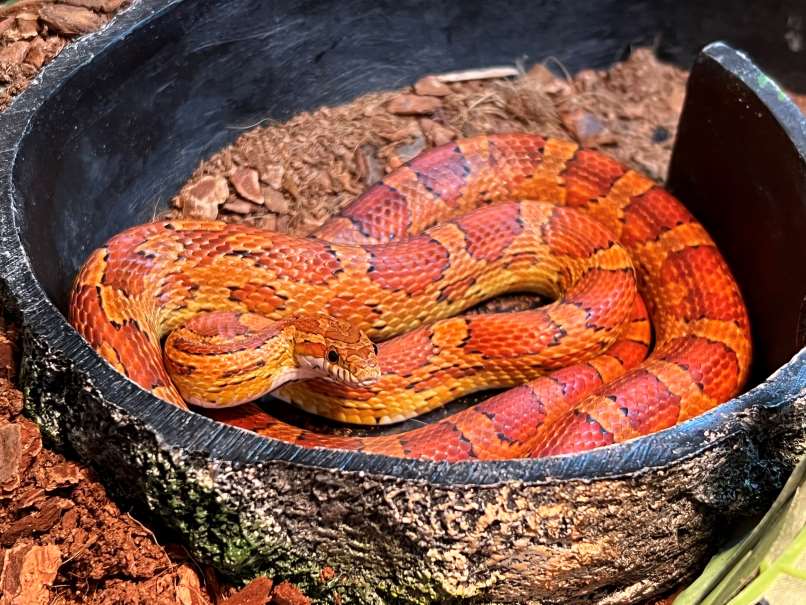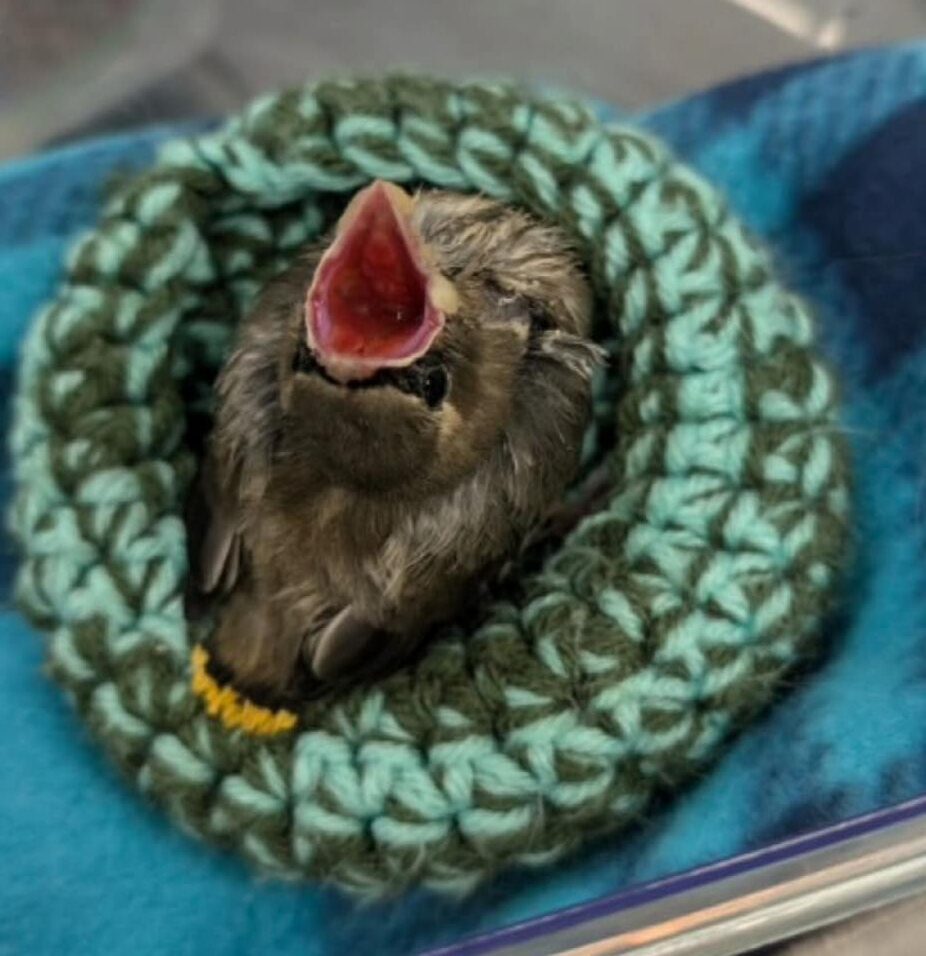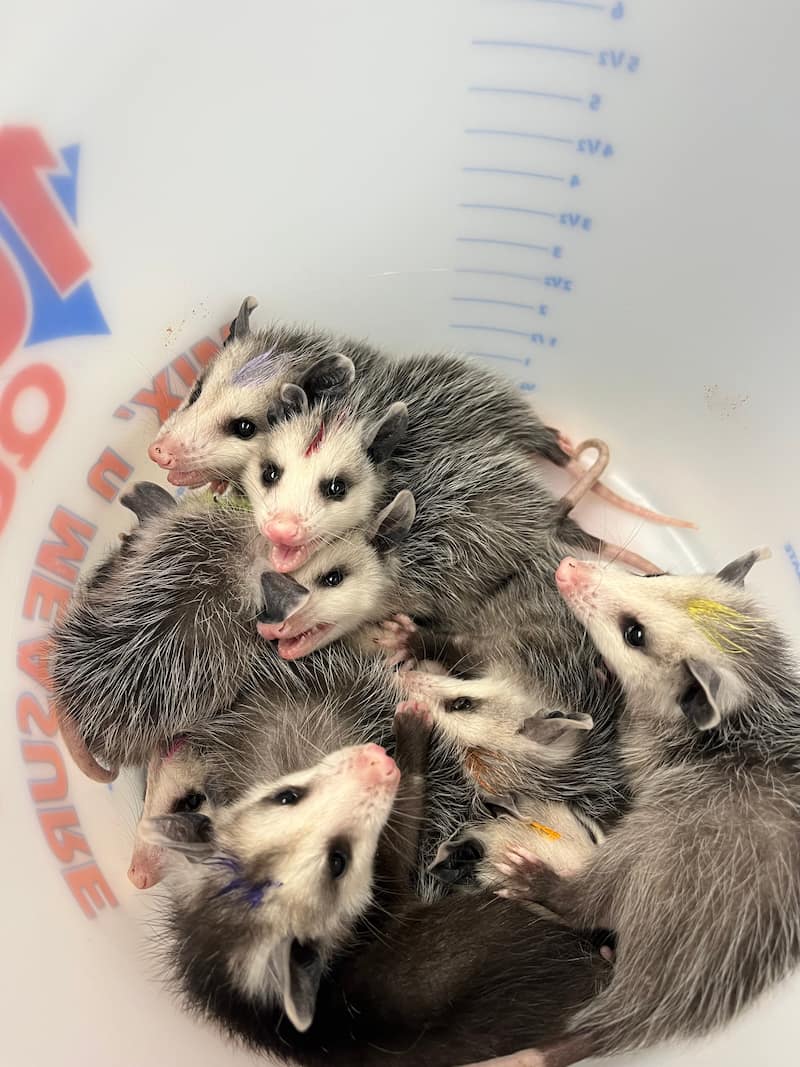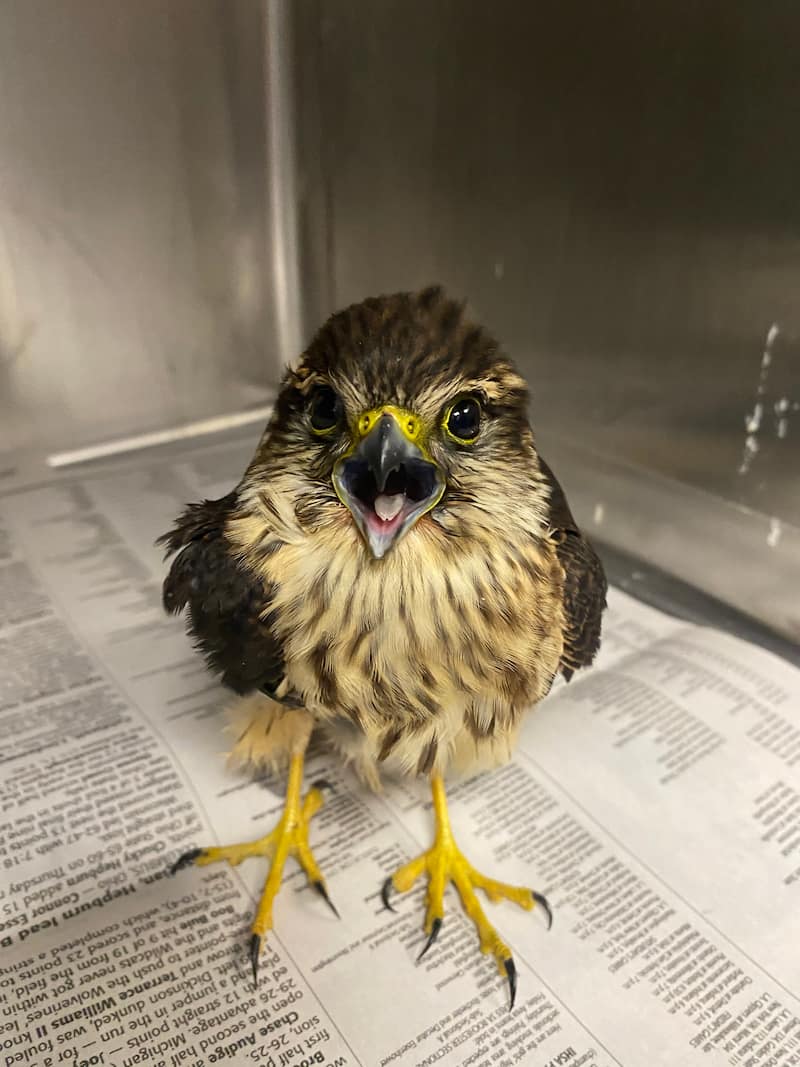The Wildlife Medical Clinic’s Ambassador Program is growing once again! Help us give a warm welcome to our newest reptile – “Maize,” the corn snake!
Introduction to Maize
One of the goals of our ambassador educational events is to get community members of all ages up close to species they may not be as familiar with. This can help people gain more respect for the animals, and, commonly in the case of our reptile species, might reduce feelings of fear. We currently have an ambassador Brazilian rainbow boa named Caduceus, but we have been interested in adding another snake ambassador from a species more similar to those found in Illinois. Since snakes rarely present to the Wildlife Medical Clinic as patients, we started keeping an eye on Illinois reptile rescues, looking for a snake that would be a good fit for our program.
A Bit About Corn Snakes
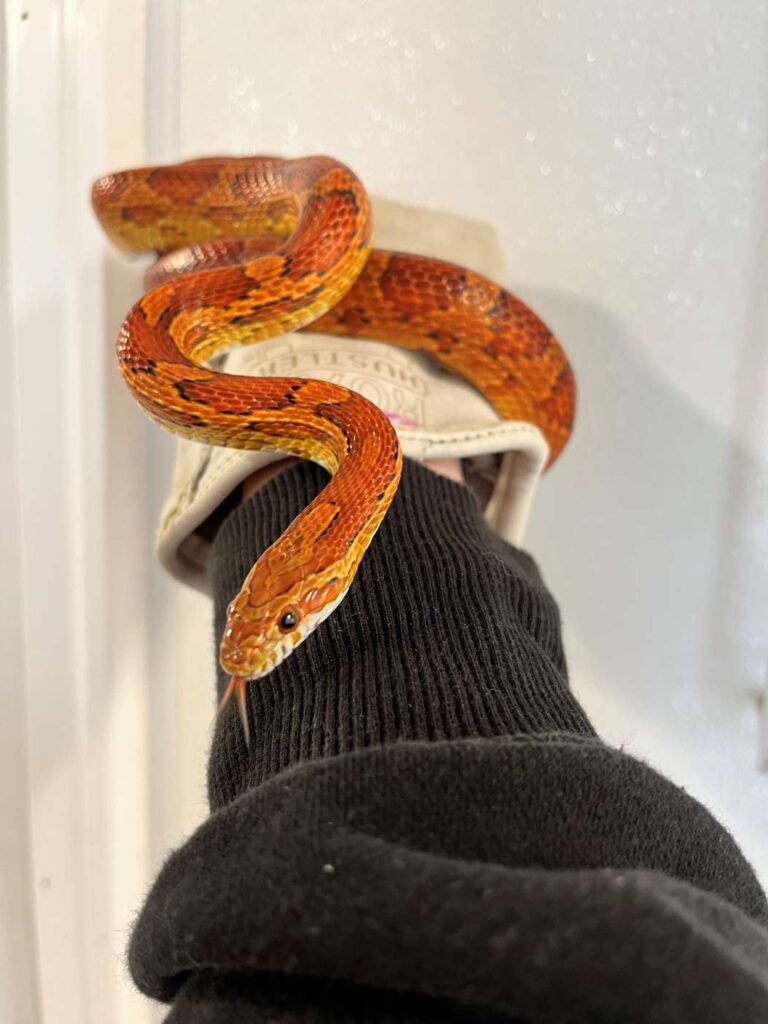
Corn snakes (Pantherophis guttatus, also known as red rat snakes) are typically found in the southeastern United States and are part of the snake family Colubridae. Colubrids, generally, are slender and non-venomous, subduing small rodent prey with constriction before eating them whole. Illinois is home to many colubrid species, like rat snakes and fox snakes, so Maize will allow us to talk about the importance of these snakes in our ecosystems, as well as how to distinguish non-venomous colubrids from venomous species like Copperheads or Eastern Massasauga Rattlesnake.
Corn snakes are very common as pet snakes due to their manageable size and typically docile manner. They have also been selectively bred in a variety of colors and patterns. The “wild-type” coloring of a corn snake, which Maize displays, is a deep orange with red blotches, called saddles, outlined in black along the top of their back and along the sides. Their belly scales are a striking alternating black and white, which somewhat resembles Indian or flint corn, which may have given them the name “corn” snakes. In turn, this is how we decided on the name Maize!
How Maize Came to Us
Maize comes from the Lost Woods Animal Sanctuary in Crystal Lake, Illinois, and joined us in early April. When getting a new reptile, whether as a pet or in a zoological collection, it’s recommended that the animal be housed in a room separate from other reptiles for the first few months to reduce the risk of spreading disease. We make sure to use separate equipment where possible and sanitize our hands before switching between Maize and our other reptile ambassadors and always try to clean and handle our resident reptiles first before we clean and handle Maize. So far, Maize appears healthy and should be wrapping up her quarantine period at the end of June. We are excited to be able to introduce her in programs soon!
Maize’s First Exam
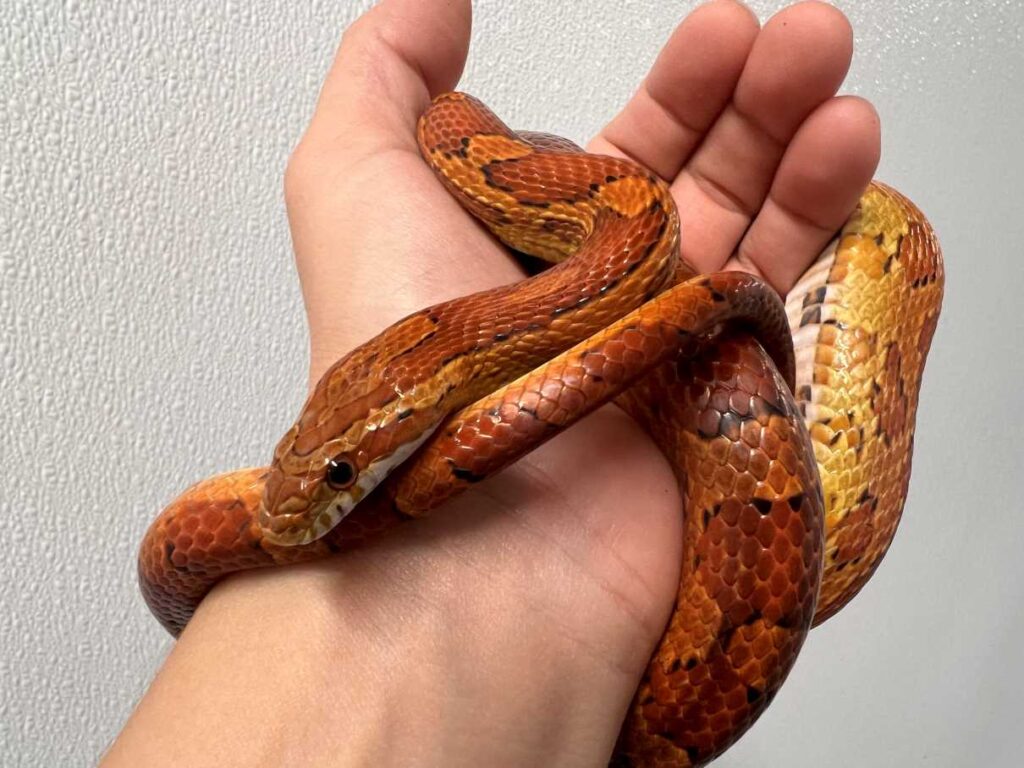
In our first exam, we determined that Maize is approximately two years old, and confirmed she is a female through a sexing method called probing. We ran routine blood work, and everything was within normal limits. She is a sweet snake and loves to interact with our volunteers. She is curious and is eating and growing well. She is not full-grown yet, but we expect her to reach adult size in the next year. While corn snakes only live 6-8 years in the wild, they can live more than 20 years in human care, so we hope Maize is able to teach our community about snakes for many years to come!
This article was written by Sarah, one of Wildlife Medical Clinic’s Ambassador Coordinators.

